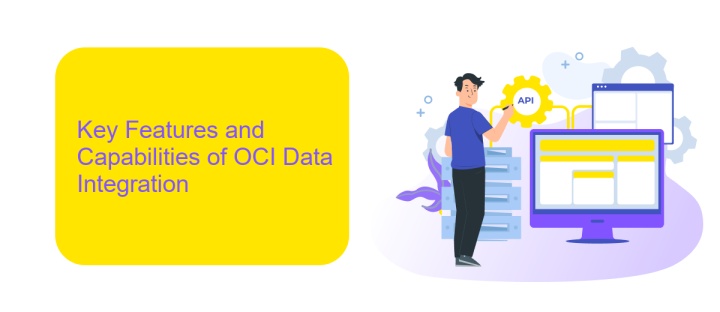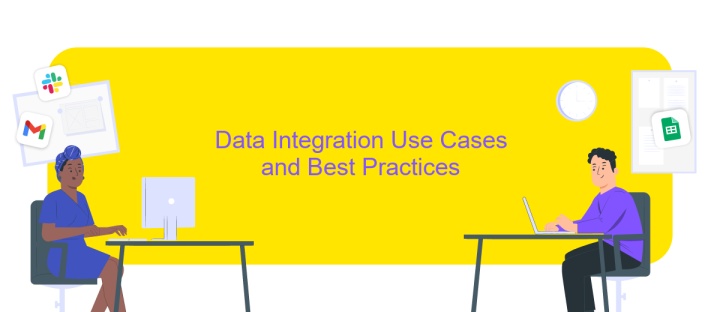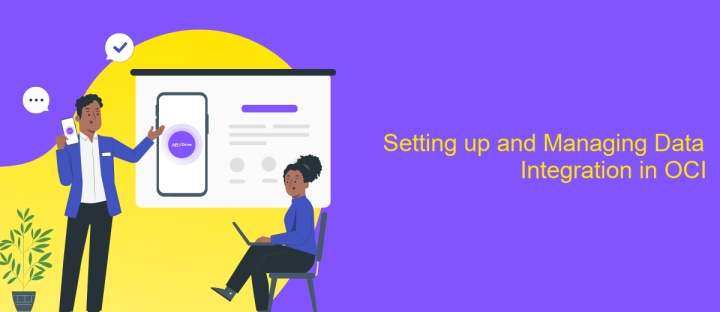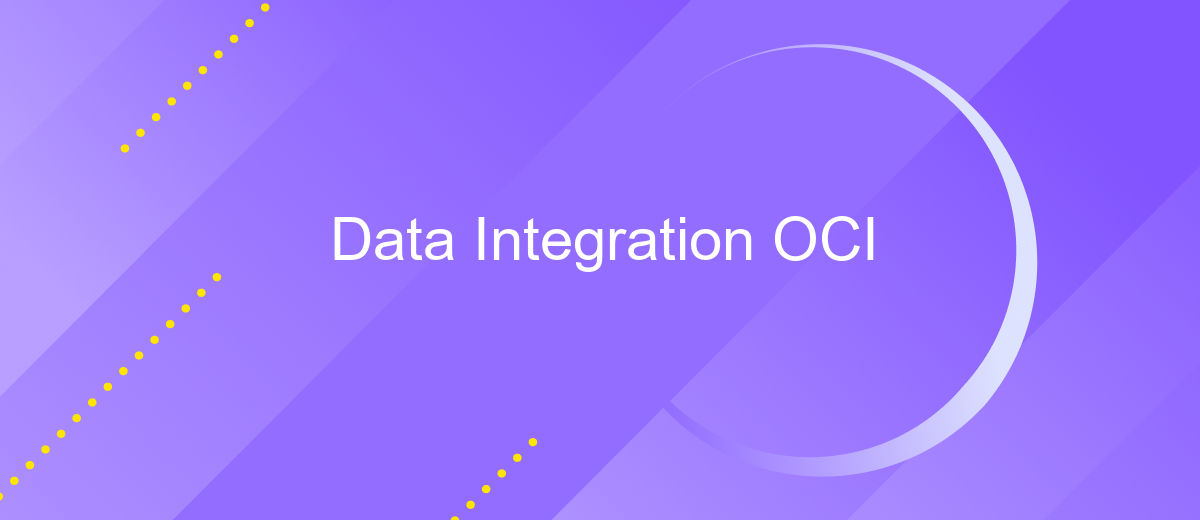Data Integration OCI
Data integration in Oracle Cloud Infrastructure (OCI) is a critical component for businesses looking to streamline their operations and enhance decision-making. By seamlessly connecting disparate data sources, OCI enables organizations to consolidate, analyze, and leverage their data effectively. This article explores the key features and benefits of data integration within OCI, highlighting how it empowers businesses to achieve greater efficiency and drive innovation in today's data-driven landscape.
Introduction to Data Integration in Oracle Cloud Infrastructure (OCI)
Oracle Cloud Infrastructure (OCI) offers a robust platform for data integration, enabling businesses to seamlessly connect, transform, and manage data across diverse sources. With OCI, organizations can harness the power of integrated data to drive insights and make informed decisions. The platform provides scalable, secure, and efficient tools to facilitate data integration processes, ensuring that data flows smoothly between on-premises systems and the cloud.
- Scalability: OCI supports dynamic scaling, allowing businesses to handle large volumes of data efficiently.
- Security: With robust security features, OCI ensures data protection and compliance.
- Flexibility: The platform integrates with various data sources, offering flexibility in data management.
- Automation: OCI provides automation tools to streamline data integration workflows.
In today's data-driven world, effective data integration is crucial for gaining a competitive edge. OCI's comprehensive suite of integration services empowers organizations to break down data silos, enhance collaboration, and optimize data-driven strategies. By leveraging OCI's capabilities, businesses can transform raw data into valuable insights, driving innovation and growth. Whether dealing with structured or unstructured data, OCI ensures seamless integration, paving the way for enhanced operational efficiency and strategic decision-making.
Key Features and Capabilities of OCI Data Integration

Oracle Cloud Infrastructure (OCI) Data Integration offers a robust suite of features designed to streamline and enhance data workflows. At its core, OCI Data Integration provides a user-friendly interface that simplifies the process of designing data pipelines, making it accessible even to those with minimal technical expertise. With its powerful data transformation capabilities, users can efficiently cleanse, enrich, and transform data to meet diverse business needs. The platform supports a wide range of data sources and targets, ensuring seamless integration across various environments. This flexibility is further enhanced by its ability to handle large volumes of data, ensuring high performance and scalability.
In addition to its core functionalities, OCI Data Integration offers advanced monitoring and management tools that help maintain the health and efficiency of data pipelines. Users can leverage these tools to gain insights into data flow and promptly address any issues that arise. For those looking to automate integrations, services like ApiX-Drive can be utilized alongside OCI Data Integration to further streamline processes, enabling seamless connectivity between applications and systems. This combination of features and capabilities makes OCI Data Integration a comprehensive solution for modern data management challenges.
Data Integration Use Cases and Best Practices

Data integration in Oracle Cloud Infrastructure (OCI) is essential for organizations aiming to streamline operations and enhance data-driven decision-making. By consolidating disparate data sources, businesses can achieve a unified view of their information landscape, enabling more accurate analytics and reporting. OCI offers robust tools to facilitate seamless integration, ensuring data consistency and accessibility across various platforms.
- Customer 360-Degree View: Integrate customer data from multiple channels to create a comprehensive profile, enhancing personalized marketing and service delivery.
- Real-Time Analytics: Enable real-time data processing from IoT devices and transactional systems to support dynamic decision-making and operational efficiency.
- Data Migration: Seamlessly migrate legacy data to cloud environments, ensuring minimal disruption and maintaining data integrity.
Adhering to best practices in data integration involves prioritizing data quality and governance. Establish clear data ownership and implement robust security measures to protect sensitive information. Regularly monitor and audit data integration processes to identify and rectify anomalies promptly. By adopting these practices, organizations can maximize the value of their data assets, driving innovation and maintaining a competitive edge in the digital landscape.
Setting up and Managing Data Integration in OCI

Oracle Cloud Infrastructure (OCI) offers robust tools for data integration, enabling seamless data flow across various systems. Setting up data integration in OCI involves configuring data sources, establishing connections, and ensuring data mapping accuracy. This process is crucial for maintaining data consistency and reliability across your enterprise applications.
Managing data integration in OCI requires a strategic approach to monitor data pipelines, resolve potential conflicts, and optimize performance. Regular audits and updates are essential to adapt to changing data demands and ensure compliance with industry standards. Effective management also involves leveraging OCI's analytics to gain insights into data operations and improve decision-making processes.
- Configure secure connections between data sources and OCI.
- Establish data mapping and transformation rules.
- Monitor data pipelines for performance and accuracy.
- Regularly update integration settings to align with business needs.
By setting up and managing data integration effectively in OCI, organizations can achieve a unified data environment that supports informed decision-making and drives business growth. Leveraging OCI's capabilities ensures that data is not only integrated efficiently but also remains secure and accessible for all stakeholders.


Conclusion and Future Trends in OCI Data Integration
In conclusion, Oracle Cloud Infrastructure (OCI) Data Integration provides a robust platform for streamlining data processes, ensuring seamless connectivity across various data sources. The platform's scalability and performance make it a preferred choice for organizations aiming to enhance their data management strategies. As businesses continue to generate massive volumes of data, the demand for efficient data integration solutions will only increase. OCI's commitment to innovation and adaptability positions it well to meet these evolving needs, offering users the ability to harness their data's full potential.
Looking ahead, the future of OCI Data Integration is promising, with trends leaning towards increased automation and AI-driven data processes. Services like ApiX-Drive could complement OCI's offerings by providing additional integration capabilities, simplifying the connection between disparate systems. As the landscape of data integration evolves, OCI is expected to incorporate more advanced analytics and machine learning features, enabling users to derive deeper insights from their data. These advancements will likely enhance decision-making processes and drive business growth, ensuring OCI remains at the forefront of data integration solutions.
FAQ
What is Data Integration in OCI?
How can I automate data integration processes?
What are the benefits of using data integration tools?
How do I ensure data security during integration?
Can I integrate data from both cloud-based and on-premises systems?
Do you want to achieve your goals in business, career and life faster and better? Do it with ApiX-Drive – a tool that will remove a significant part of the routine from workflows and free up additional time to achieve your goals. Test the capabilities of Apix-Drive for free – see for yourself the effectiveness of the tool.

